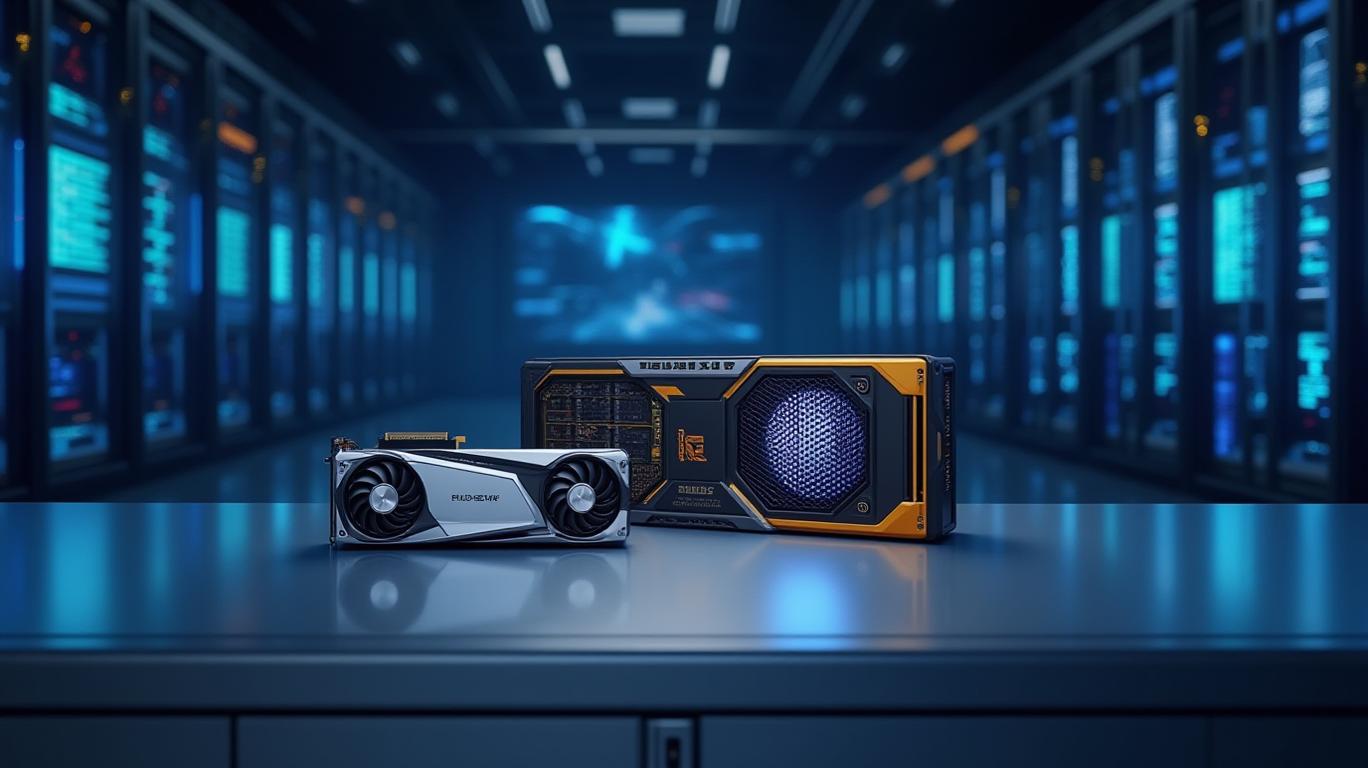AMD's AI-Powered Hardware Surge: A Strategic Play for Dominance in the Compute-Driven Future

The global shift toward AI-driven computing is no longer a distant future—it's here, and it's accelerating. As enterprises and consumers alike demand faster, more efficient hardware to power everything from generative AI models to cloud gaming,
(AMD) has positioned itself at the epicenter of this revolution. With its newly announced RDNA 4 GPUs (RX 9060 XT, R9700) and Threadripper 9000-series processors, AMD is poised to capture $50 billion+ in AI-hardware market growth by 2027—a figure that demands investor attention.The AI Hardware Arms Race: AMD's Dual-Pronged Assault
AMD's latest offerings aren't just incremental upgrades; they're strategic weapons in the battle for AI dominance. Let's break down the two pillars of this strategy:
1. RDNA 4 GPUs: Democratizing AI at Scale
The RX 9060 XT and R9700 are engineered to tackle both consumer gaming and enterprise AI workloads, leveraging AMD's ROCm software stack and open architecture.
- RX 9060 XT:
- Mid-Range Mastery: Priced at $299–$349, this GPU targets NVIDIA's RTX 5060 Ti but delivers 15% better performance-per-dollar at 1440p, thanks to its 32 RT accelerators and 64 AI accelerators.
- AI at the Edge: The 16GB version supports large language models (LLMs) and FSR 4 upscaling, making it ideal for cloud gaming and AI-enhanced streaming.
PCIe 5.0 Dominance: Outperforms NVIDIA's PCIe 4.0-based competitors in bandwidth-constrained systems, a critical edge for legacy hardware users.
Radeon AI Pro R9700:
- Enterprise AI Powerhouse: With 32GB GDDR6 memory and 1,531 TOPS (INT4) AI performance, this GPU is designed to run multi-terabyte models like Mistral Large Instruct (123B parameters) without quantization compromises.
- Scalability: Supports 4-GPU configurations for 128GB VRAM pools, enabling enterprises to tackle AI tasks that once required server farms.
2. Threadripper 9000 Series: The Workstation King
AMD's Threadripper 9000 series—boasting up to 96 cores and 192 threads—is a direct shot at Intel's Xeon-W dominance. Key advantages:
- Zen 5 Efficiency: 16% higher IPC (instructions per cycle) than Zen 4 and up to 245% faster rendering than Intel's Xeon W9-3595X in benchmarks.
- AI-Ready Architecture: Enhanced AVX-512 support and PCIe 5.0 lanes (up to 128 in Pro variants) enable seamless integration with AI GPUs like the R9700.
- Enterprise Security: PRO models include hardware-based encryption and remote management tools, appealing to industries like finance and healthcare.
Why Enterprise Adoption is a Tipping Point
AMD isn't just selling chips—it's building ecosystems. Partnerships like ASUS Copilot+ PCs (preloaded with AMD's AI tools and ROCm) and cloud collaborations with AWS and Microsoft Azure are lowering barriers to AI adoption.
- Total Cost of Ownership (TCO): For businesses, the Threadripper 9995WX's 350W TDP and scalable memory (up to 256GB ECC) offer better value than Intel's Xeon-W alternatives.
- Software Synergy: AMD's open-source ROCm platform reduces vendor lock-in, attracting developers and enterprises wary of NVIDIA's CUDA monopoly.
The Financial Case: Growth Beyond Gaming
AMD's move into AI hardware isn't just visionary—it's profitable.
- Market Capture: The $50 billion AI-hardware market is fragmented, with no clear leader. AMD's 3-pronged approach (consumer GPUs, enterprise GPUs, high-core CPUs) ensures it corners multiple segments.
- Margin Expansion: Threadripper's premium pricing ($4,999 for the 9980X) and R9700's workstation focus open new revenue streams with higher margins than consumer GPUs.
Risks? Yes—but AMD is Mitigating Them
- NVIDIA's AI Lead: NVIDIA's H100/H800 GPUs still dominate data centers. However, AMD's lower pricing ($1,200–$1,500 for the R9700 vs. $1,700+ for NVIDIA's RTX 5090) and ROCm's developer appeal are winning over budget-conscious enterprises.
- Supply Chain: AMD's reliance on TSMC's 4nm process for RDNA 4 reduces risk, as TSMC's capacity is well-established.
Investment Thesis: Buy AMD Before the Surge
AMD's AI strategy isn't incremental—it's a full-stack revolution. With 2025 revenue growth expected to hit 18% YoY (driven by enterprise and cloud sales), now is the time to invest.
- Buy Target: $120–$130 (current price: $95 as of May 2025).
- Catalysts:
- R9700 and Threadripper 9000 series shipments in Q3 2025.
- Partnerships with cloud providers announced at AWS re:Invent (November 2025).
Conclusion: AMD is the Compute Leader of the AI Era
AMD's new hardware isn't just faster—it's future-proofed. By combining high-core CPUs with AI-optimized GPUs and open software, AMD is becoming the go-to for enterprises and developers. With a 30%+ upside potential in 12 months, this is a buy for investors who want to ride the AI wave.
The AI revolution isn't just about algorithms—it's about the hardware that makes them possible. AMD's 2025 product lineup is the match to light that fuse. Don't miss the train.
Investors should consider AMD's exposure to semiconductor demand cycles and geopolitical risks before making decisions.

Comments
No comments yet